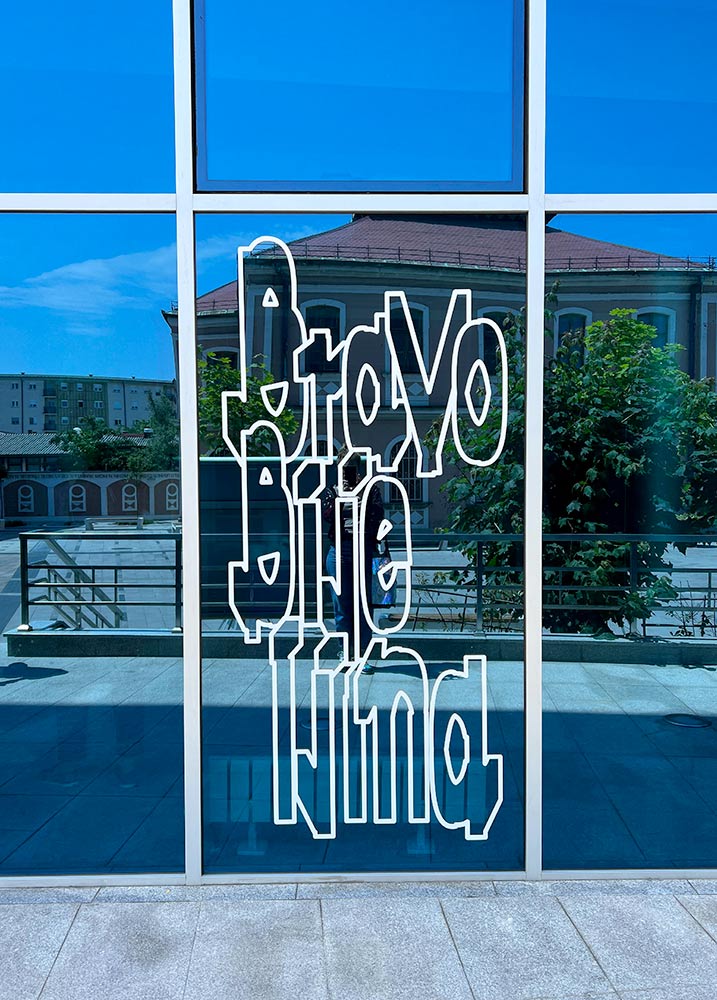
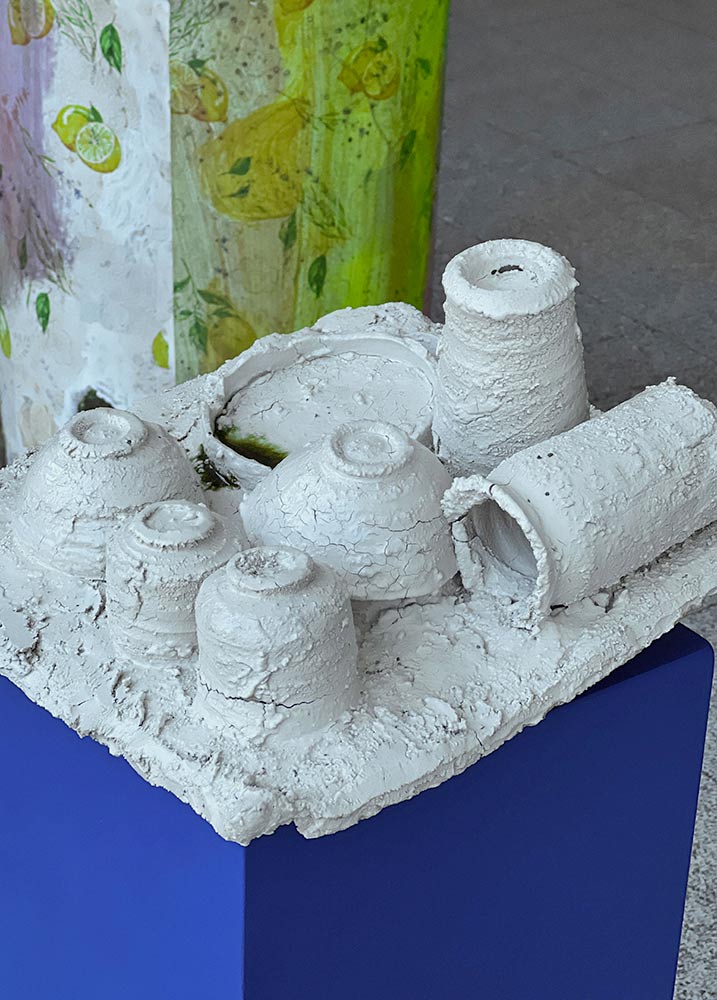
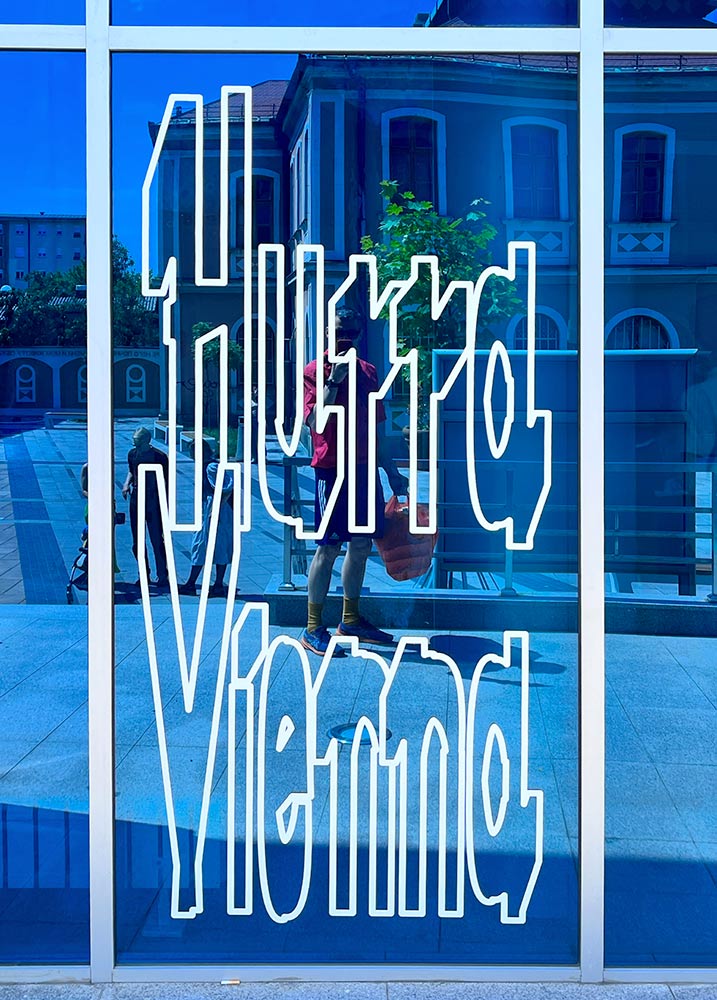

On May 19, 2023, the first Bijeljinale opened under the motto Beč(Vienna) Bijeljina – an exhibition that brought together the work of 24 Viennese artists and designers to the Cultural Center “Semberija” in Bijeljina, in interaction with seven local authors from Bijeljina. The bustling town is located in the border triangle of Bosnia and Herzegovina, Serbia and Croatia. Curated by artist Pavle Golijanin and me the project aimed to fuel the artistic and intercultural exchange between Bosnia and Herzegovina and Austria, while also setting a spotlight on the regional South-Eastern European cultural scene. Its aim was to facilitate the convergence and presentation of contemporary styles from artists in Vienna, a vibrant European art hub, in interaction with local authors from Bijeljina. In addition to the exhibition, there was a one-week art residency that offered five artists the opportunity to create their works on site.

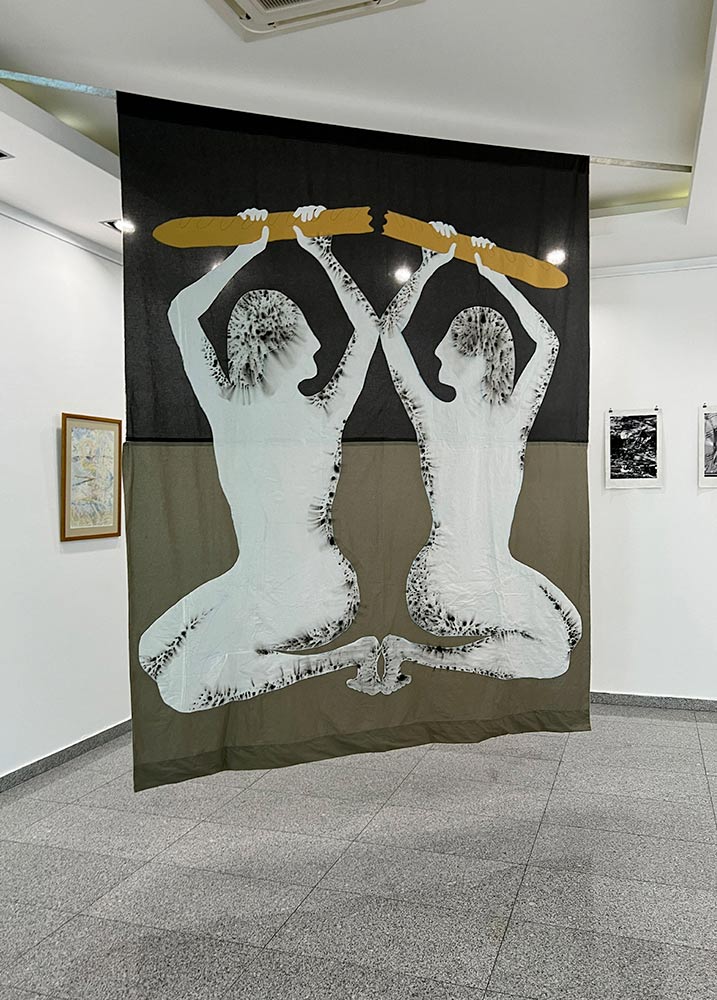




Purposefully avoiding strict guidelines, the exhibition did not have a specific overarching theme. To establish coherence, we selected the „table“ as a symbolic object representing gatherings, discussions, and social interactions – a metaphorical centerpiece. This choice holds particular significance within the cultural and international exchange between Bosnia and Herzegovina and Austria, two countries with a complex and intertwined history. The „table“ served as a starting point rather than a rigid theme that artists had to adhere to. Throughout the process, some artists drew inspiration from it, such as Anna Zimmermann’s project, Susanna Hofer’s photographs, or Dominik Louda’s painting. It served as a launch for exchange between local artists, Viennese artists, and the participating workshops that collaborated and contributed to the exhibition’s development.
Initially, we had limited knowledge about the number of artists who would accept our invitation. As the process unfolded, we were pleasantly surprised to find that all the artists we invited agreed to participate, which exceeded their expectations. We positioned ourselves as a relaxed and alternative platform, distinct from traditional curatorial exhibition initiatives. We fostered an open and accommodating atmosphere towards the artists, avoiding unnecessary formalities. Besides that, we intended to move away from art scenes primarily focused on the Balkans. While cities like Belgrade, Sarajevo, and Zagreb serve as vibrant cultural hubs, and Austria has a strong presence there through the Austrian Cultural Forum, we deliberately chose Bijeljina – a location that can be considered culturally underdeveloped – to offer a fresh perspective on art to the local community.

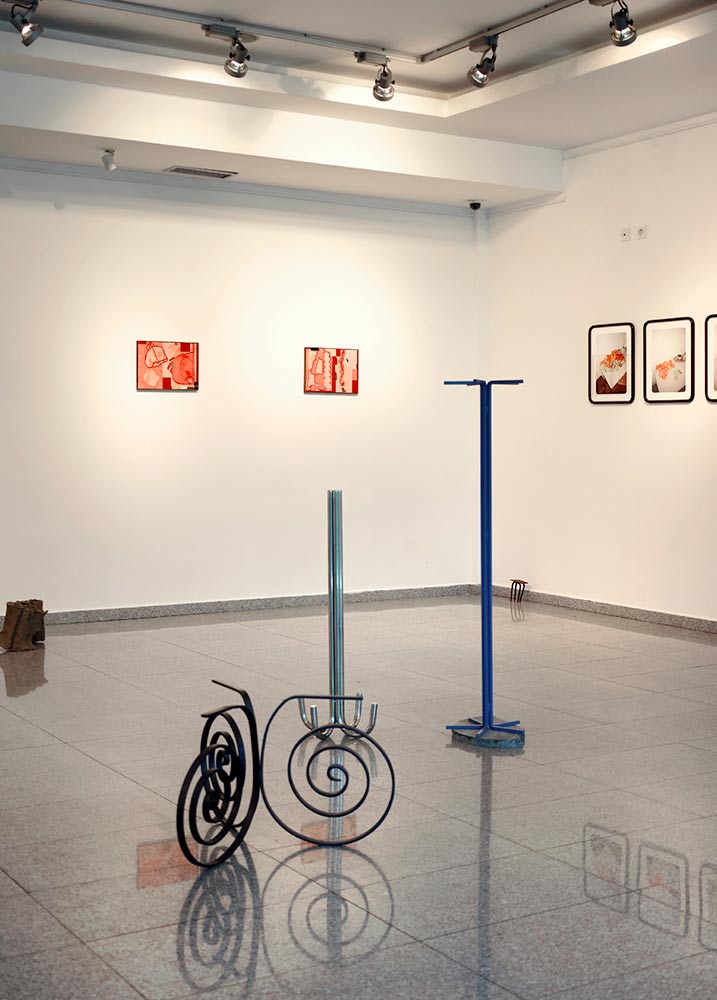




Out of the 31 artists participating, five of them arrived in Bijeljina before the exhibition to create their artworks directly on-site. With the support of a screen printing workshop, a ceramic kiln, and ample workspace, Johanna Pichlbauer, Daniel Stuhlpfarrer, Paulina Semkowicz, Svenja Plaas and Gabriel Roland found inspiration in the local environment. Collaborative efforts with local artisans and workshops bridged gaps left by some of the absent artists. For instance, Daniel Ferstl entrusted his project to a skilled local tailor, resulting in an unexpected and captivating outcome. Lukas Thaler involved a local concrete mixer, who meticulously crafted sculptures according to the artists’ specifications. Furthemore, Gašper Kunšič and Anna Zimmermann submitted their designs in advance and arrived just before the exhibition opening to oversee the creation of their on-site objects.
Pavle and I are actively working on our vision to continue with the project, with a broader focus on Europe as a whole rather than exclusively on Vienna. This means that future exhibitions could bear names like ParisBijeljina or BerlinBijeljina among others. Our connections and networks primarily influence the selection of cities. In today’s interconnected world, it is common to have friends, acquaintances, colleagues, and partners scattered across different European locations. What adds a unique and intriguing aspect to the project is the potential for Bijeljina to emerge as an affordable and alternative hotspot.
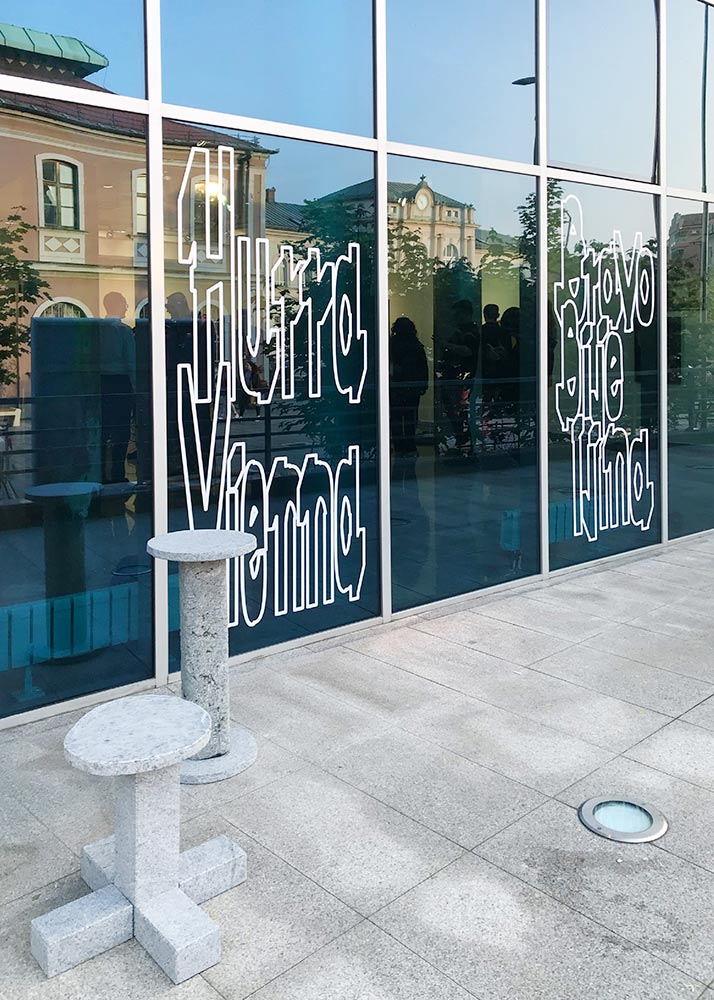


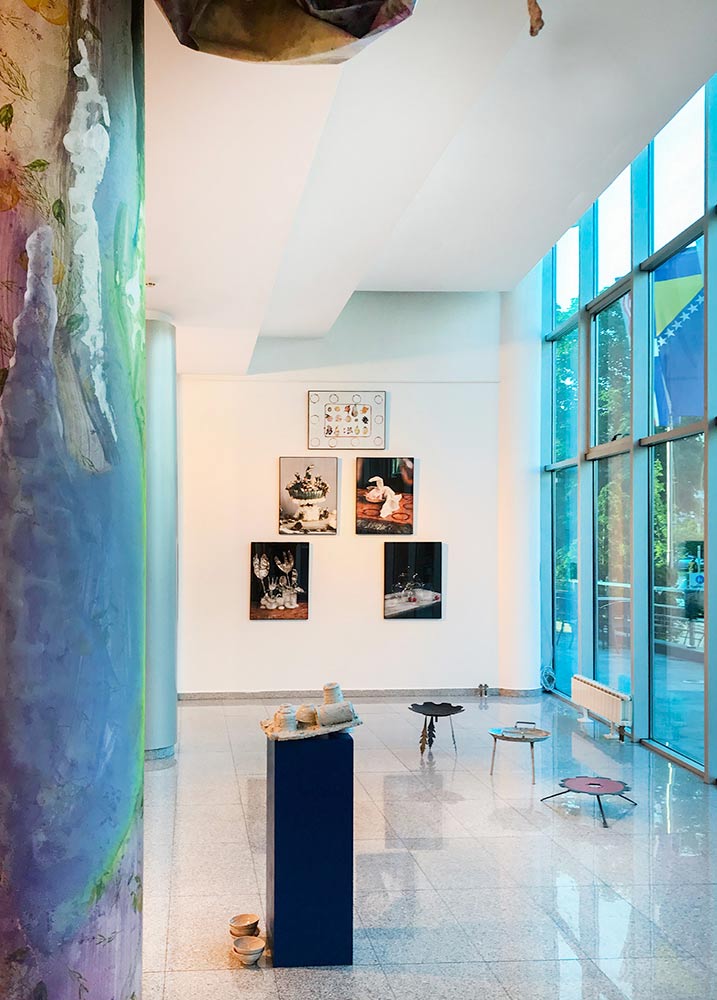
An important highlight of the exhibition is the personal camaraderie between us and the artists. Spending several days together during the exhibition opening has fostered closer connections and has been invaluable for all those involved, enhancing the overall experience and artistic community.
Organizing an exhibition of this magnitude in a small and remote town in Bosnia has posed significant practical challenges. The demands occasionally overwhelmed individuals, particularly in smaller towns. The gallery space itself presented its own set of challenges. Initially perceiving the extremely blue glass front as suboptimal, it eventually became a distinctive branding of the entire exhibition.
Rather than blending in with white rooms, our intention to be different and stand out was reinforced by this unique characteristic – the Blue Cube. It is crucial to acknowledge that Bosnia and Herzegovina is still an emerging country, with financial resources not as abundant as in Western metropolises. This reality meant working with fewer resources, but Pavle and I refused to use it as an excuse. Instead, we set high standards for ourselves. We were determined not to settle for presenting an inferior or lower-quality exhibition. This challenge became the driving force behind our relentless pursuit of excellence.
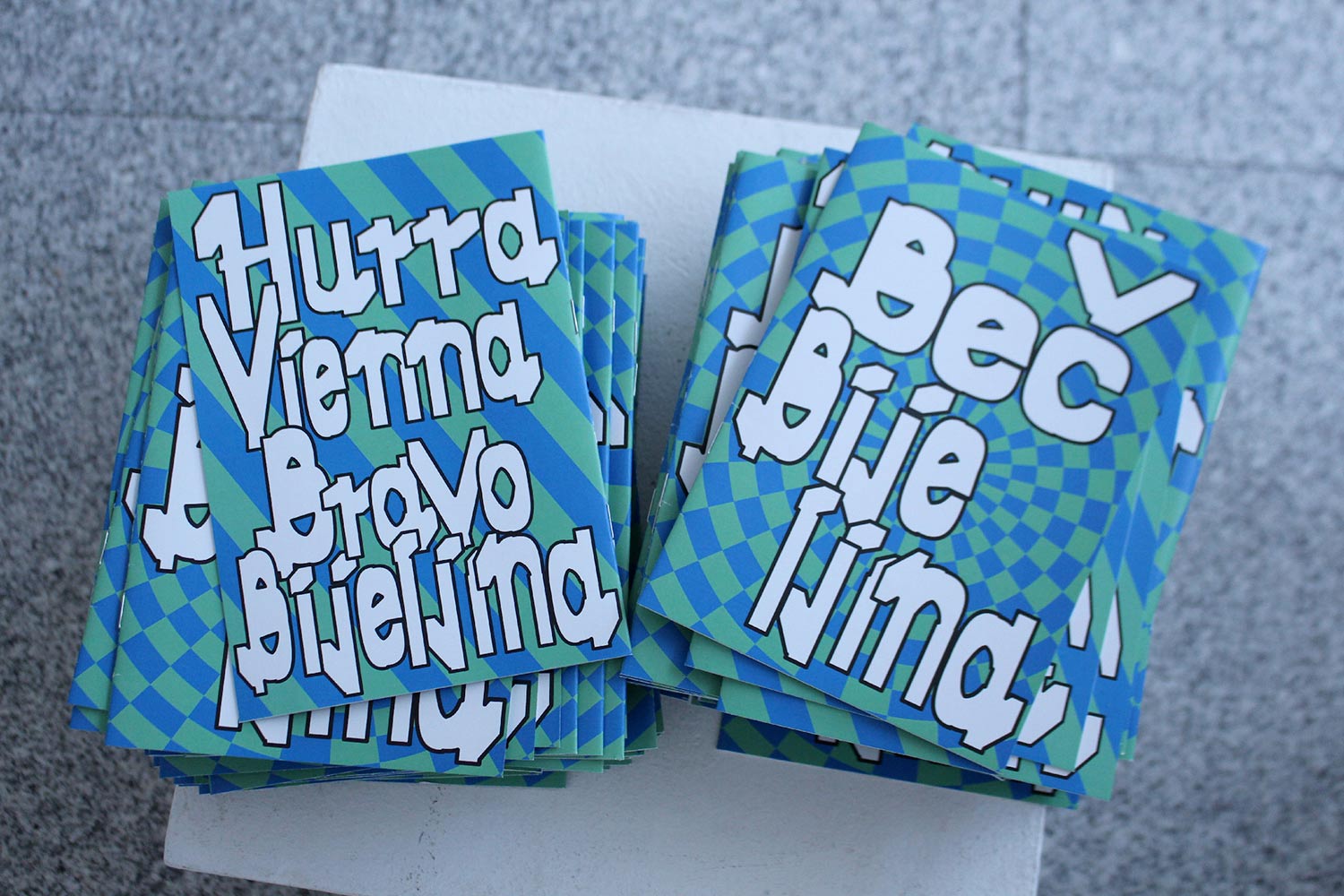


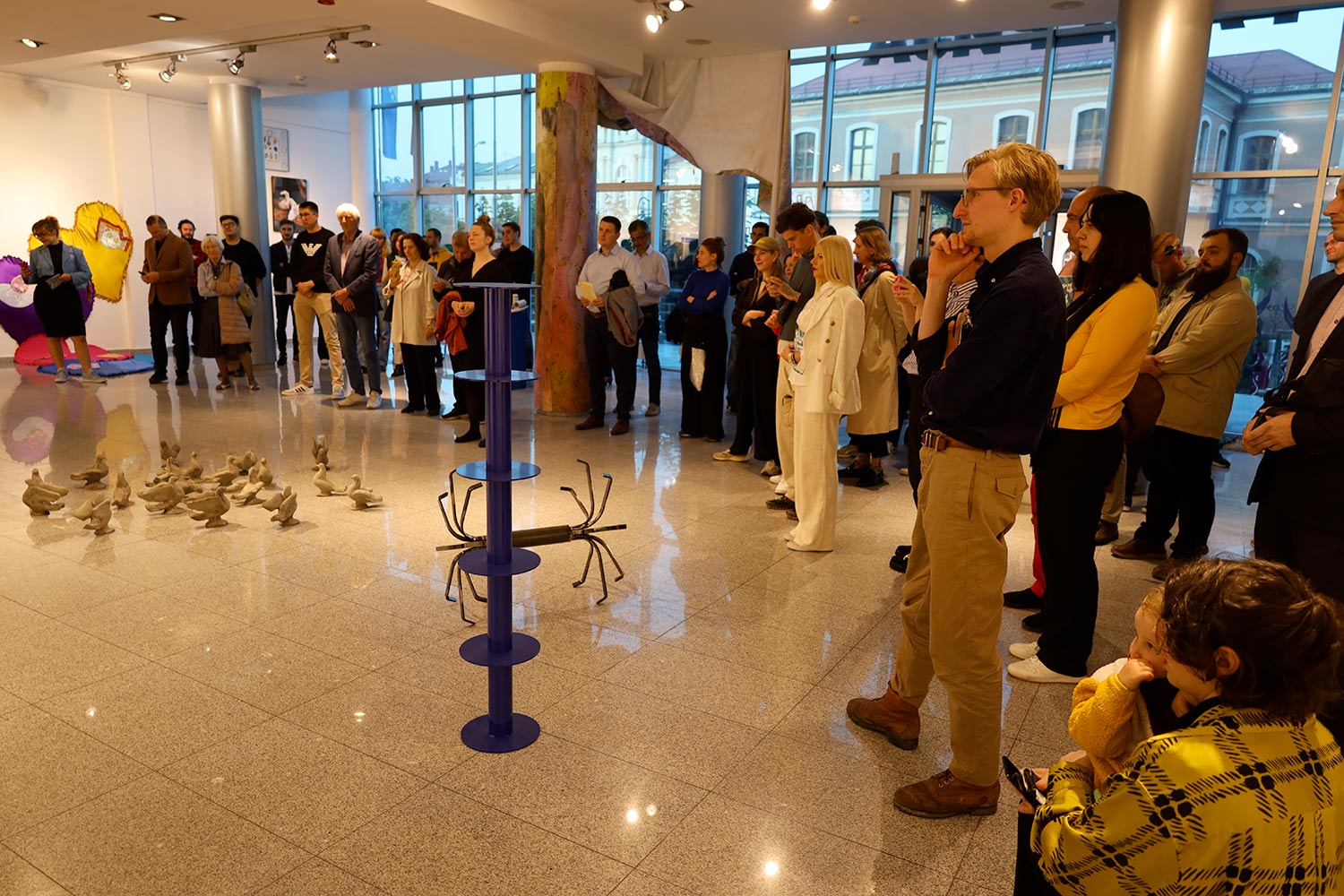
The inclusion of the term Beč (in all official languages of Bosnia and Herzegovina word for Vienna) adds an element of exoticism to the project. Many people from Vienna will likely encounter this term for the first time. When something familiar is expressed differently, it tends to pique curiosity and evoke questioning. Despite the significant presence of people from the Balkans in Vienna and the enduring influence of Vienna in terms of history, architecture, cuisine, furniture, and cultural expressions in Bosnia and Herzegovina, there is still considerable room for improvement in terms of collaboration between the two regions.
The name BečBijeljina is intentionally chosen to reflect the essence of the exhibition. The project is also commonly referred to as Bijeljinale a playful nod to the well-known Biennale, adding an element of lightheartedness to the overall experience.




On May 19, 2023, the first Bijeljinale opened under the motto Beč(Vienna) Bijeljina – an exhibition that brought together the work of 24 Viennese artists and designers to the Cultural Center “Semberija” in Bijeljina, in interaction with seven local authors from Bijeljina. The bustling town is located in the border triangle of Bosnia and Herzegovina, Serbia and Croatia. Curated by artist Pavle Golijanin and me the project aimed to fuel the artistic and intercultural exchange between Bosnia and Herzegovina and Austria, while also setting a spotlight on the regional South-Eastern European cultural scene. Its aim was to facilitate the convergence and presentation of contemporary styles from artists in Vienna, a vibrant European art hub, in interaction with local authors from Bijeljina. In addition to the exhibition, there was a one-week art residency that offered five artists the opportunity to create their works on site.






Purposefully avoiding strict guidelines, the exhibition did not have a specific overarching theme. To establish coherence, we selected the „table“ as a symbolic object representing gatherings, discussions, and social interactions – a metaphorical centerpiece. This choice holds particular significance within the cultural and international exchange between Bosnia and Herzegovina and Austria, two countries with a complex and intertwined history. The „table“ served as a starting point rather than a rigid theme that artists had to adhere to. Throughout the process, some artists drew inspiration from it, such as Anna Zimmermann’s project, Susanna Hofer’s photographs, or Dominik Louda’s painting. It served as a launch for exchange between local artists, Viennese artists, and the participating workshops that collaborated and contributed to the exhibition’s development.
Initially, we had limited knowledge about the number of artists who would accept our invitation. As the process unfolded, we were pleasantly surprised to find that all the artists we invited agreed to participate, which exceeded their expectations. We positioned ourselves as a relaxed and alternative platform, distinct from traditional curatorial exhibition initiatives. We fostered an open and accommodating atmosphere towards the artists, avoiding unnecessary formalities. Besides that, we intended to move away from art scenes primarily focused on the Balkans. While cities like Belgrade, Sarajevo, and Zagreb serve as vibrant cultural hubs, and Austria has a strong presence there through the Austrian Cultural Forum, we deliberately chose Bijeljina – a location that can be considered culturally underdeveloped – to offer a fresh perspective on art to the local community.





Out of the 31 artists participating, five of them arrived in Bijeljina before the exhibition to create their artworks directly on-site. With the support of a screen printing workshop, a ceramic kiln, and ample workspace, Johanna Pichlbauer, Daniel Stuhlpfarrer, Paulina Semkowicz, Svenja Plaas and Gabriel Roland found inspiration in the local environment. Collaborative efforts with local artisans and workshops bridged gaps left by some of the absent artists. For instance, Daniel Ferstl entrusted his project to a skilled local tailor, resulting in an unexpected and captivating outcome. Lukas Thaler involved a local concrete mixer, who meticulously crafted sculptures according to the artists’ specifications. Furthemore, Gašper Kunšič and Anna Zimmermann submitted their designs in advance and arrived just before the exhibition opening to oversee the creation of their on-site objects.

Pavle and I are actively working on our vision to continue with the project, with a broader focus on Europe as a whole rather than exclusively on Vienna. This means that future exhibitions could bear names like ParisBijeljina or BerlinBijeljina among others. Our connections and networks primarily influence the selection of cities. In today’s interconnected world, it is common to have friends, acquaintances, colleagues, and partners scattered across different European locations. What adds a unique and intriguing aspect to the project is the potential for Bijeljina to emerge as an affordable and alternative hotspot.


An important highlight of the exhibition is the personal camaraderie between us and the artists. Spending several days together during the exhibition opening has fostered closer connections and has been invaluable for all those involved, enhancing the overall experience and artistic community.
Organizing an exhibition of this magnitude in a small and remote town in Bosnia has posed significant practical challenges. The demands occasionally overwhelmed individuals, particularly in smaller towns. The gallery space itself presented its own set of challenges. Initially perceiving the extremely blue glass front as suboptimal, it eventually became a distinctive branding of the entire exhibition.


Rather than blending in with white rooms, our intention to be different and stand out was reinforced by this unique characteristic – the Blue Cube. It is crucial to acknowledge that Bosnia and Herzegovina is still an emerging country, with financial resources not as abundant as in Western metropolises. This reality meant working with fewer resources, but Pavle and I refused to use it as an excuse. Instead, we set high standards for ourselves. We were determined not to settle for presenting an inferior or lower-quality exhibition. This challenge became the driving force behind our relentless pursuit of excellence.


The inclusion of the term Beč (in all official languages of Bosnia and Herzegovina word for Vienna) adds an element of exoticism to the project. Many people from Vienna will likely encounter this term for the first time. When something familiar is expressed differently, it tends to pique curiosity and evoke questioning. Despite the significant presence of people from the Balkans in Vienna and the enduring influence of Vienna in terms of history, architecture, cuisine, furniture, and cultural expressions in Bosnia and Herzegovina, there is still considerable room for improvement in terms of collaboration between the two regions.


The name BečBijeljina is intentionally chosen to reflect the essence of the exhibition. The project is also commonly referred to as Bijeljinale a playful nod to the well-known Biennale, adding an element of lightheartedness to the overall experience.